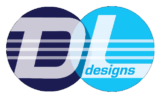pcb design guide
How to create a PCB Layout Creating the files for a PCB design can be complicated and it's important each stage is completed accurate to ensure there are no issues with the files that are used for manufacturing the PCB. This guide demonstrates the latest process of how to create a PCB design using the best software, this can be built by any circuit board manufacturer. We've created a basic guide of how to create a PCB design. Click here to read this first. Potential problems, issues and challenges will be addressed. We will also provide cutting edge solutions to prevent complications whilst designing the PCB layout. One of the best tools to use e.g, Cadance, Allegro will be used to show the design cycle. There are some useful online videos available to explain this further. Schematic Drawing the PCB schematic is fundamental as designing the PCB itself. The schematic is used to place all of the parts and add the connections. Once completed, the schematic will create the PCB layout, adding the components and signals. To start working on the schematic, click on page 1. Right-click on New Page to add additional pages. Adding all of the parts together before you begin is the best way to avoid missing any components whilst adding the connections. Schematic symbols can be obtained from the libraries provided by Orcad. For the schematic to load the component to the design, the correct footprint has to be assigned. It is essential to follow an IPC naming convention such as IPC-7351. Click on the link to learn more about this. At this point, further part information such as part numbers, values and packages must be provided. The more information that can be added, the more detailed parts lists and other reports can be generated. Once all of the symbols have been added to the schematic and the correct footprint names have been assigned, the connections can be added. Drawing the wires accurately is essential to creating the PCB design. Before the PCB layout can be created, the schematic needs to be assured to help identify any errors are not carried on the design. Adding the connections is very straight forward. Power and ground symbols can be added to simplify the schematic. It's easy to run out of room whilst building the schematic. Keep groups of components close together but away from other groups, whilst…


